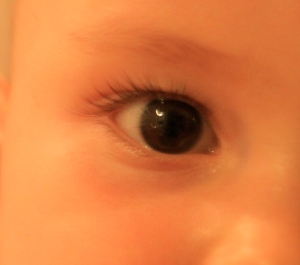 The term “dominant” refers to the relationship between the two versions of a gene (more accurately, alleles) we inherit from each parent for the same trait.
The term “dominant” refers to the relationship between the two versions of a gene (more accurately, alleles) we inherit from each parent for the same trait.
For example, we all have two alleles that determine thumb-shape, one from mom, one from dad. As it happens, we only need one of these alleles to code for straight thumbs in order to be born with straight thumbs. Therefore this trait is said to be dominant, and the alternative, curvy thumbs, is said to be “recessive.”
It’s common to abbreviate dominant traits with a capital letter, and recessive ones in lower case. For example, S=straight thumbs, and c=curvy thumbs. In this example, the combinations SS or Sc would give a person straight thumbs. Only cc would result in “hitchhiker’s thumb,” the recessive trait where the thumbs curve backward in the upright, “thumbs up” position.
Ben Stiller has hitchhiker’s thumb, so he must have “curvy” thumb-shape alleles from both parents (cc).
Note that Anne Meara and Jerry Stiller could actually have straight thumbs and yet be carriers who were capable of passing along the “c” trait to Ben, if the alleles they got from their parents were, in both cases, S and c. In this scenario, Ben Stiller would have had a 1 in 4 chance of inheriting the cc combination from his parents.
The “father of genetics” Gregor Mendel was the first to describe dominance when his experiments with pea plants showed pretty consistently that recessive traits like short, green or wrinkled appeared 1 in 4 times among the offspring of cross-bred plants.



